People
Patricia Marroquin Norby Is the Met’s First Curator of Native American Art. Here’s How She Navigates the Field’s Thorniest Issues
The curator is in charge of the museum's new Indigenous art program.
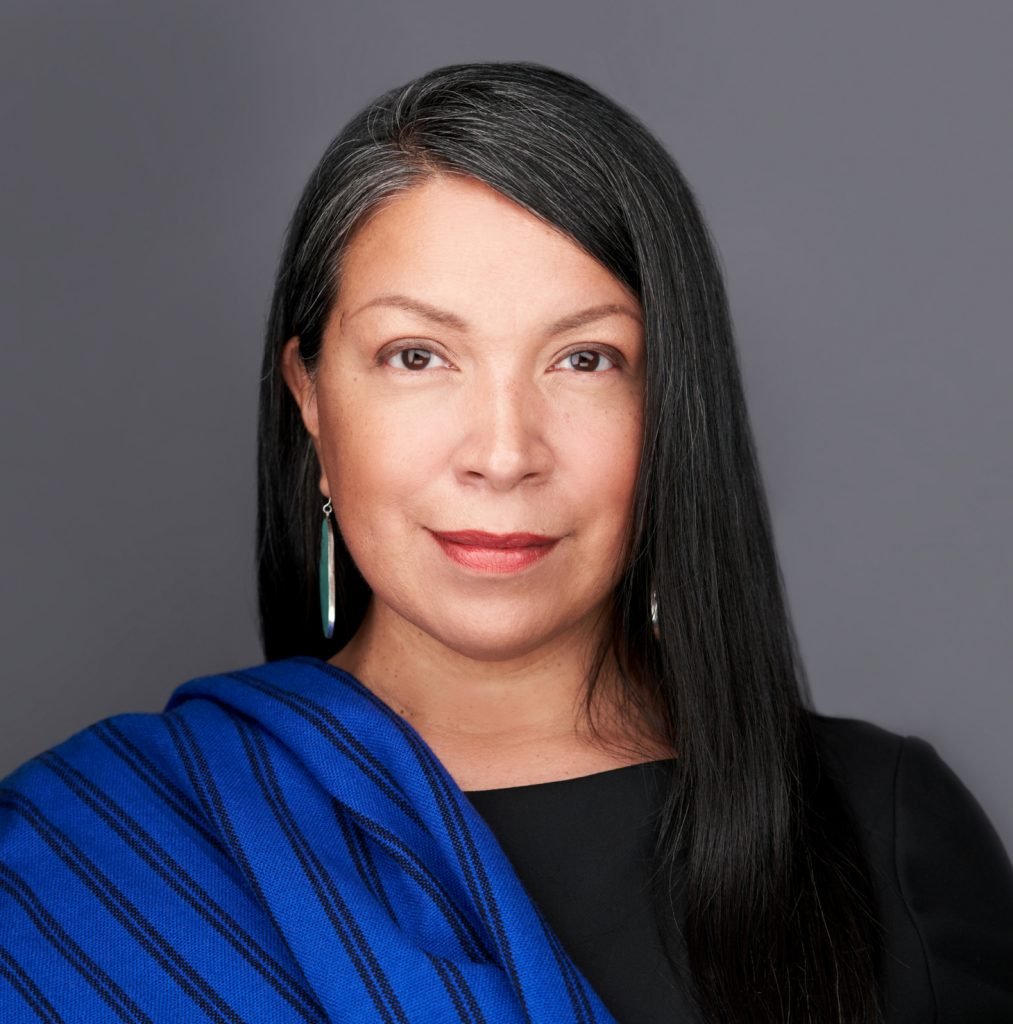
The curator is in charge of the museum's new Indigenous art program.

Sarah Cascone

Last year, New York’s Metropolitan Museum of Art announced that it was creating a new Indigenous art program, and hiring its first-ever curator of Native American art to oversee it. Patricia Marroquin Norby, who is descended from Mexico’s Indigenous Purépecha people and most recently served as the assistant director of the Smithsonian’s National Museum of the American Indian in New York, joined the museum in that new role in September.
The Met has expanded its vision for Native art in recent years, prompted by the promised gift of 91 works of Native American art from Charles and Valerie Diker in 2017. In making their donation, the couple insisted that these were American works of art and, as such, should be displayed in the museum’s American wing. And so, for the first time, the exhibition “Art of Native America: The Charles and Valerie Diker Collection” did just that.
But the show was not without controversy. The Association on American Indian Affairs said that the Met did not consult with tribal leaders about the exhibition, and that most of the items on view were not art. “They are ceremonial or funerary objects that belong with their original communities and could only have ended up in a private collection through trafficking and looting.”
Artnet News spoke to Norby about her vision for the museum’s Native American collection and programming, and why it’s important not to make assumptions about an institution’s audience.
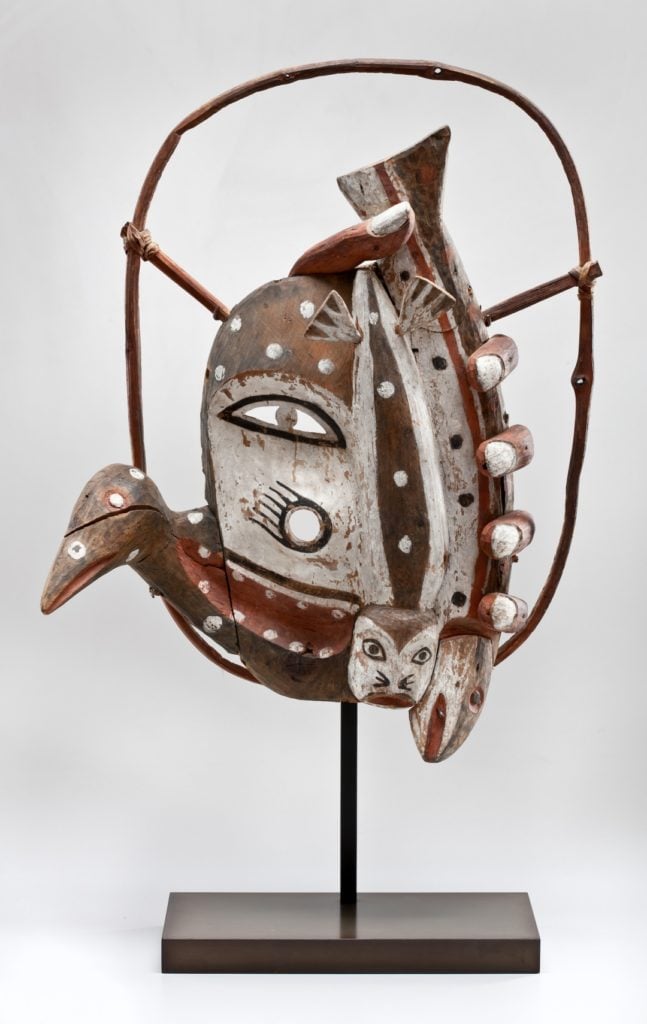
Unrecorded Yup’ik artist, dance mask (Yup’ik, Alaska, 1900). Courtesy Metropolitan Museum of Art, promised gift of Charles and Valerie Diker, photo by Dirk Bakker.
The museum has never had a curator of Native art before. So where do you start? What are the first tasks on your agenda?
As a Purépecha Indian woman with ancestral roots in the southwest, I begin by acknowledging that I am a guest in the New York region. The museum sits on Lenapehoking, Lenape homelands. It’s very important to me to acknowledge my visitor status in this place. Respecting the original communities who are still very present and who call this place home is integral to who I am as an Indigenous woman and to my work as a scholar of Native art.
As a curator, a main priority is working collaboratively with Native American and Indigenous communities. I’m constantly thinking in relation to the source communities. This has always been my approach to working with museum and archival collections.
At the Met, I am studying our historical collections of Native American art, which takes time, research, and close attention. I enjoy these deep dives into collection histories. I am also establishing and maintaining relationships with local and regional Native communities, individual artists, donors, and colleagues who also work with Native American art. I am fortunate to join a cohort of curators at the Met and at peer institutions who understand the unique complexities and responsibilities of overseeing Native American and Indigenous art collections.
Currently, I am collaborating on two upcoming exhibitions and online programs. I am also developing my own exhibition proposals and preparing a rotation of our long-term installation in the American wing, art of Native America. There are many layers to my work, which I enjoy.
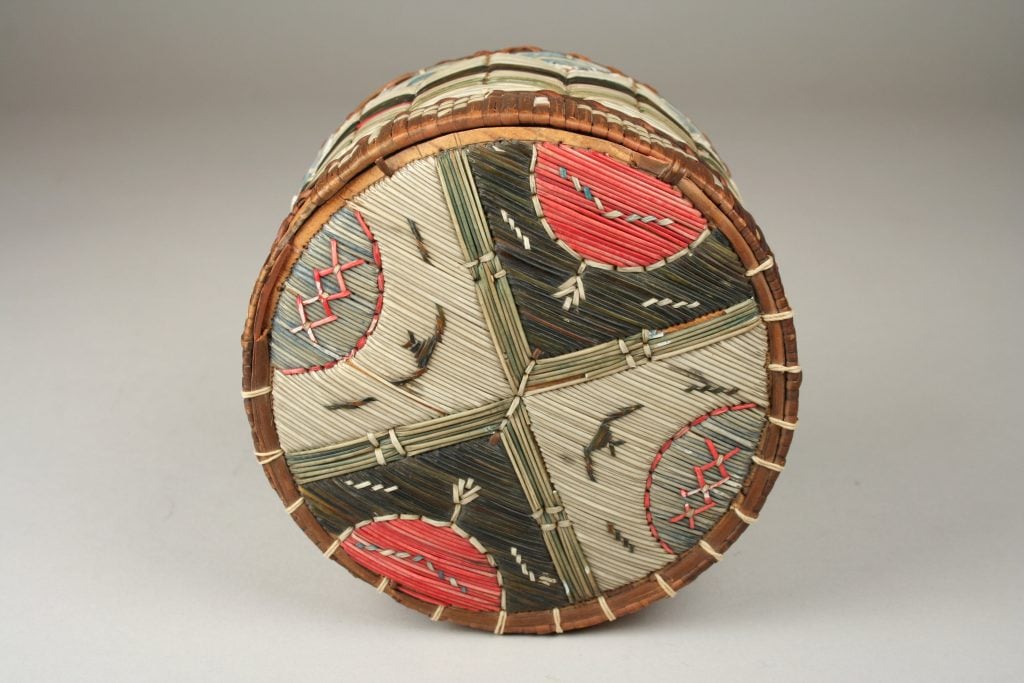
Lidded Box, Micmac, (1840–50). Photo courtesy of the Metropolitan Museum of Art.
You’re coming from an institution dedicated to the American Indian experience and history. How is the task of presenting Native art and culture in the context of an encyclopedic art institution different?
I strive for a balanced approach. I have been working in museums and archival institutions for a long time. Along the way, at each institution, I have learned something valuable and made connections. What I can say is every museum is unique. Each has its own voice, culture, and mission. No one museum gets it all “right” all the time.
I worked previously with a federal institution that identified as an Indian museum but engaged a much broader audience. There were limitations to how and what was publicly presented. They had a strong didactic approach, which is important when such a large population in the US does not realize that there are 574 sovereign Native nations within this country’s national borders, in addition to the non-federally recognized communities and Indigenous peoples from other countries who now call this country home.
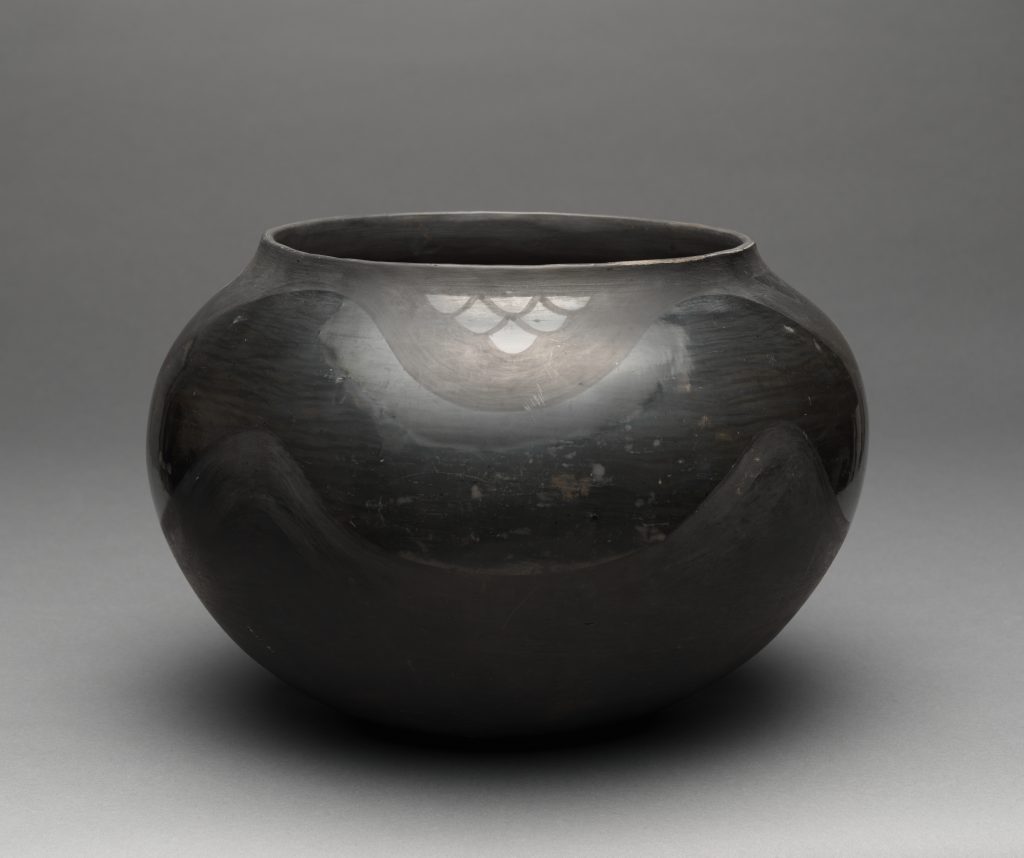
Maria Martinez and Julian Martinez, Black-on-Black Jar, New Mexico (1919–20). Photo courtesy of the Metropolitan Museum of Art.
The Met has primarily emphasized aesthetics in their presentations of Native American art. As a trained fine artist, I am dedicated to aesthetic evaluations. This is a valuable tool, a framework for understanding and assessing art. But it’s important to ask whose aesthetics are we talking about? Euro-American aesthetic standards or Native American and Indigenous aesthetics, or both? Because these can mean very different things.
Native American and Indigenous communities are distinct. They have their own cultural protocols, languages, histories, governments, and aesthetic expressions. Communal collaboration and contribution are critical to presenting this work.
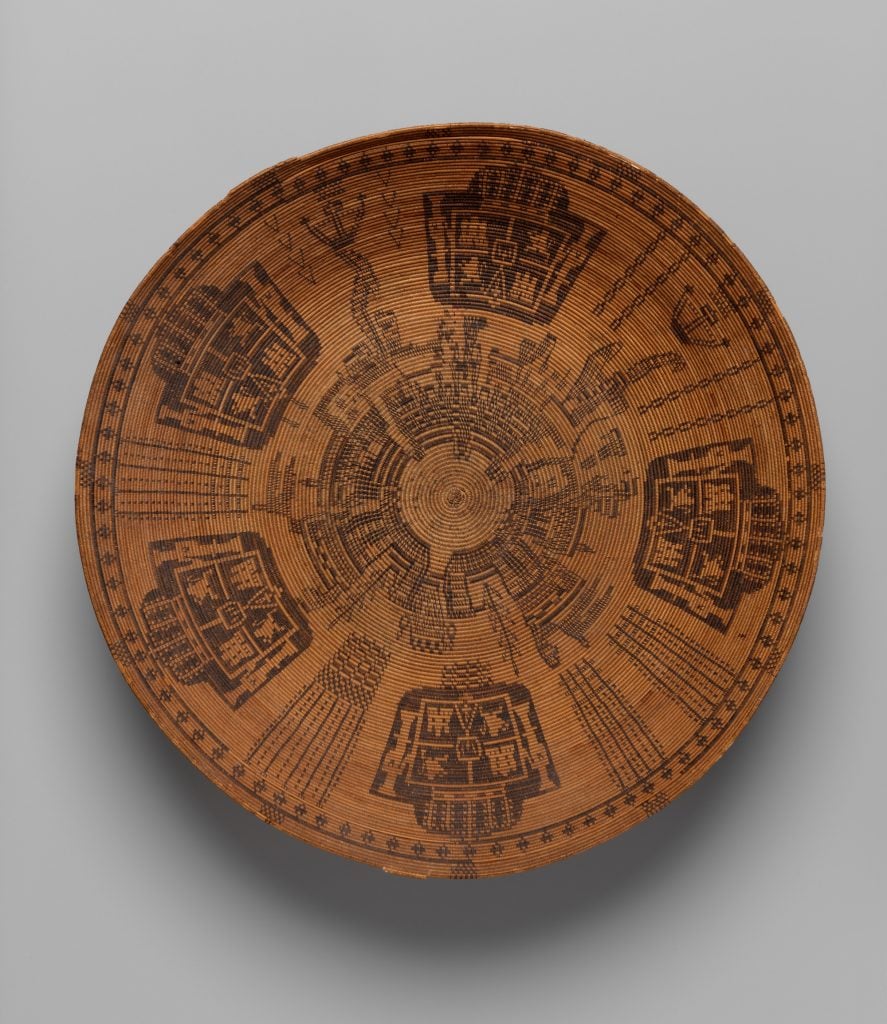
Juana Basilia Sitmelelene. Basket Tray, Mission San Buenaventura, California (c. 1820). Photo courtesy of the Metropolitan Museum of Art.
What do you think the standard Met viewer understands about Native art when entering the space? Do you think this understanding has expanded in the wake of Standing Rock and the Black Lives Matter movement?
There are definitely audience members who visit with an interest in American Indian and Indigenous histories and contemporary issues, and how they relate to both historical and contemporary Native art. However, museum audiences are incredibly diverse. Some museum-goers are well versed in fine arts, others are more grounded in Indigenous cultures and histories, and other visitors enter the museum with the intention of learning something new.
We cannot make assumptions about a standard or typical audience member anymore. Long-held generalizations and misperceptions are one reason many cultural institutions are now making necessary changes to better represent multiple perspectives.
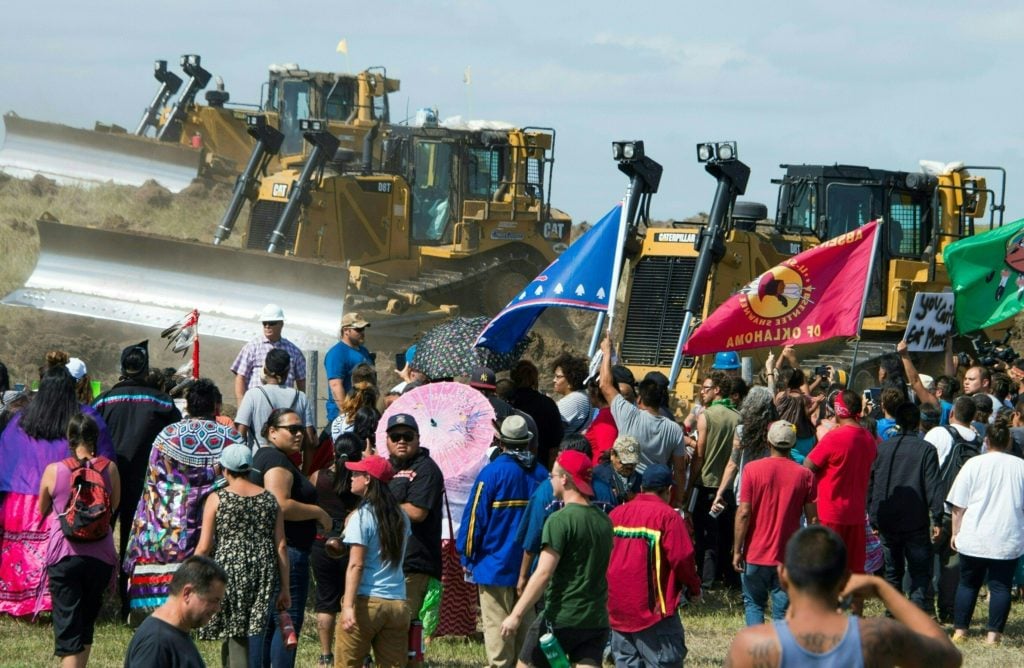
Members of the Standing Rock Sioux Tribe and their supporters opposed to the Dakota Access Pipeline confront bulldozers working on the new oil pipeline in an effort to make them stop, September 3, 2016, near Cannon Ball, North Dakota. Photo by Robyn Beck/AFP/Getty Images.
The Standing Rock protests and Black Lives Matter movement have definitely raised awareness about the environmental racism and colonial violence that BIPOC communities have been dealing with all along—it has never stopped.
With this ongoing violence, climate change, imprisonment of our Indigenous relatives at the southern US border, the Missing and Murdered Indigenous Women movement, and the coronavirus pandemic all layered on top of centuries of historical trauma and systematic racism, life can be overwhelming.
It’s been powerful to observe the alliances that have developed between Native American activists and the Black Lives Matter and larger social-justice movements during this difficult time. I’d like to see those alliances expand to include our Indigenous relatives south throughout the Americas.
Will you be taking a closer look at the Met’s Native art collection to see if any of it should be returned to tribal leaders?
Collection evaluations, issues related to the Native American Graves Protection and Repatriation Act, and deaccessions are all integral to working with Native American collections. I take this part of my job very seriously. It’s thoughtful work that requires great sensitivity, patience, and respect. It’s a long-term process. These are conversations that my colleagues and I will have with the appropriate communities.
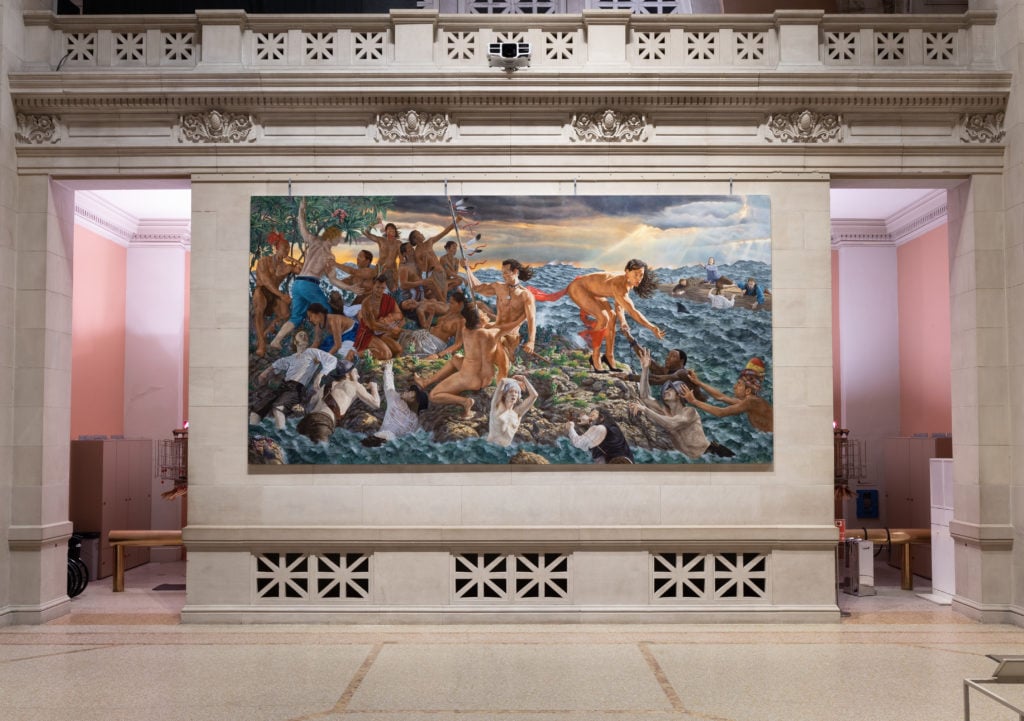
Installation view of Kent Monkman’s Resurgence of the People (2019). Photo by Anna Marie Kellen, courtesy of the Metropolitan Museum of Art.
Who are some Native artists who have never been shown at the Met who we might expect to see in some of the department’s upcoming shows? How much do you think you will be working with contemporary Native artists at the Met, and who are the artists you are most excited about right now?
I prefer an inclusive approach. Although I am often asked, unless I am working professionally with them on a project or exhibition, I hesitate publicly identifying individual artists by name. There are many strong contemporary Native American and Indigenous artists with diverse forms of creative expressions. I’ve been observing truly innovative work from fresh perspectives.
At this time, however, a number of institutions are collecting and presenting art from a select group of contemporary artists. So, museum audiences are only seeing a fraction of work from a small group who are exhibited repeatedly across major cities and venues. I want to break out of this pattern.
One goal is to also include artists who are not as widely represented and whose work is strongly grounded in their engagement with their art medium and their practice. I’m just as interested in the work of artists who are exhibiting at major museums as I am in community members who are sharing their art in online forums, or showing at regional art markets.
As a trained fine artist, I understand how things are made and the time, physical, emotional, and psychological labor that can go into creating an artwork. When I see something that is well made and innovative, it speaks to me.
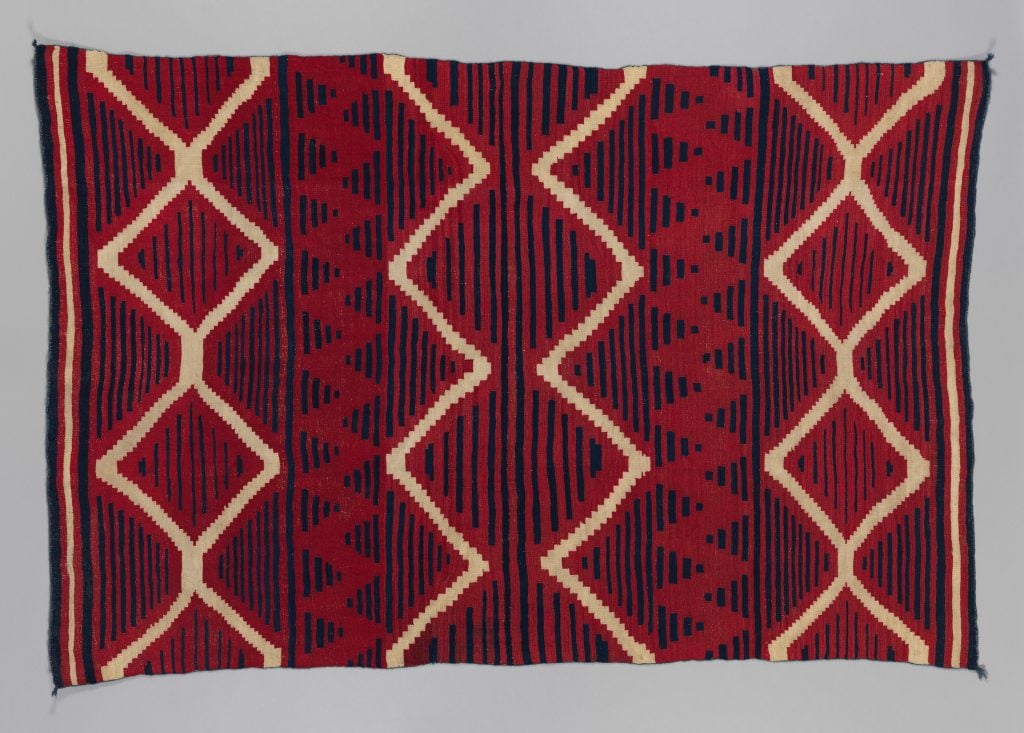
Serape, Diné/Navajo (c. 1840–50). Photo courtesy of the Metropolitan Museum of Art.
What is your advice to museums that wish to increase their engagement with Native art and artifacts, and do so in a way that is respectful of Native history and culture?
I welcome connecting with and supporting colleagues who are also interested in Native American and Indigenous art. I appreciate invitations for Zoom meetings and socially distanced coffee during this unsettled time. Giving unsolicited advice to other museums is not something I practice. Unless you are an active part of an institution, you cannot know or understand what is happening internally.
What are your collecting priorities and where are you most interested in expanding the Met’s Native art holdings?
Creative expressions are at the heart of our identities as Indigenous peoples. Native American and Indigenous art helps to sustain our cultures, nurture our communities, and connect us to our homeplace and the natural environment. It connects to our origin stories, languages, music, dance, theater. Even growing, storing, and preparing our traditional foods connects to the art.
I’m very interested in the dialogue that happens when historical and contemporary Native American art are exhibited together. I enjoy engaging with aesthetic continuities and traditions. I also delight in moments of surprise when a fresh vision or emerging technique prompts even more in-depth conversations and stronger connections between our communities.
I am deeply honored to have this opportunity to work with these important collections and their respective communities. It’s a big responsibility, but I am excited about everything that’s possible now and in the future.